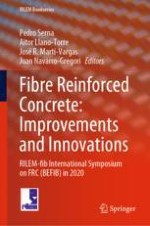2021 | OriginalPaper | Buchkapitel
Numerical Evaluation the Effect of Specimen Thickness on Fibre Orientation in Self-consolidating Engineered Cementitious Composites
verfasst von : Hai Tran Thanh, Jianchun Li, Y. X. Zhang
Erschienen in: Fibre Reinforced Concrete: Improvements and Innovations
Aktivieren Sie unsere intelligente Suche, um passende Fachinhalte oder Patente zu finden.
Wählen Sie Textabschnitte aus um mit Künstlicher Intelligenz passenden Patente zu finden. powered by
Markieren Sie Textabschnitte, um KI-gestützt weitere passende Inhalte zu finden. powered by
